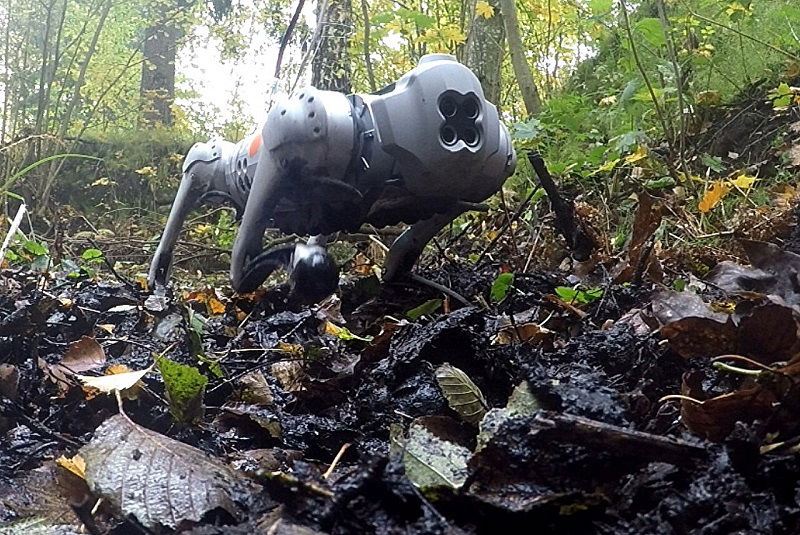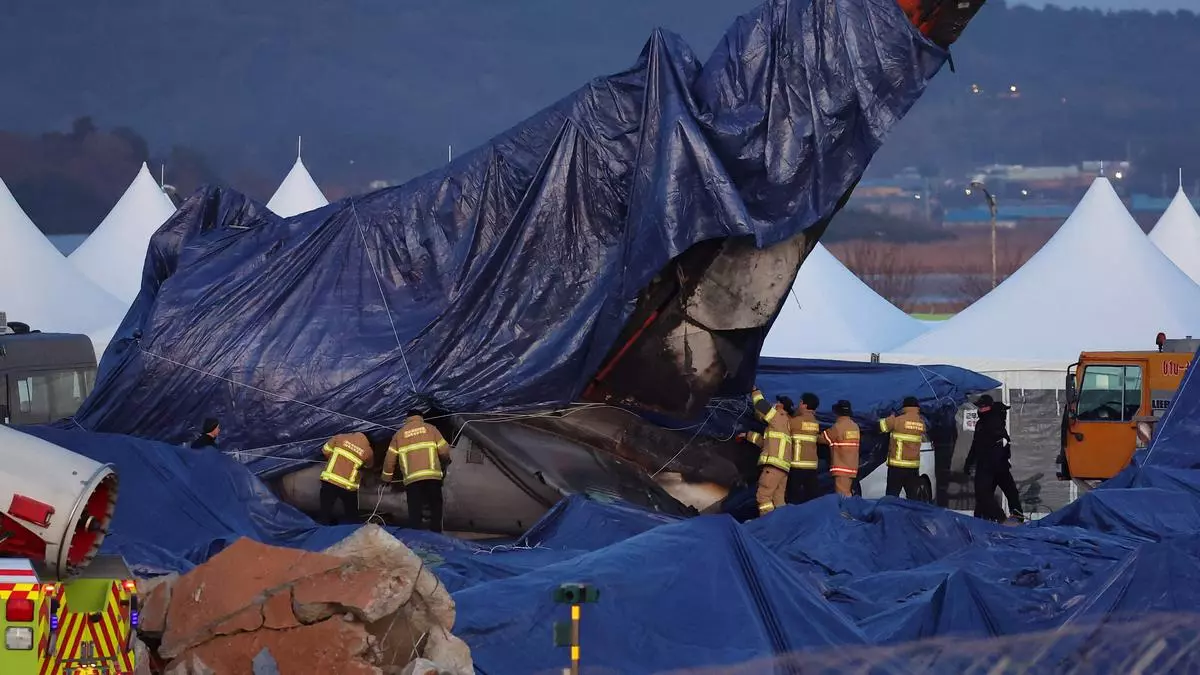I reach CERN’s Antimatter Factory at 8 a.m. sharp.
My first memory of hearing about antimatter is in the 2009 movie Angels and Demons. In the movie, the bad guys steal from this very lab a small quantity of antimatter, which they transport in a small, high-tech canister with a magnetic field. In the 15 years since I watched Tom Hanks’ character on screen, real CERN scientists have turned the fictional transportation method into a real possibility.
I’m here at the Antimatter Factory to witness an important test of that method.
A silver Mercedes-Benz truck arrives at the building. Scientists plan to transport in the truck a system carrying 100 “unbonded” or loose protons in place of antimatter. The loose protons are a fitting stand-in for antimatter particles, as they share similar properties with protons, except that they have an opposite charge, simulating how antiprotons would behave in a similar setup.
If scientists demonstrate they can transport these protons without a disturbance today, it will set the stage for transporting antiprotons, aimed to be done in 2025. The long-term goal of the scientists on the Baryon Antibaryon Symmetry Experiment, or BASE, is to establish a service to deliver antiprotons from CERN to various precision laboratories across Europe, empowering them to conduct their own antimatter research. The accelerator equipment present in CERN’s Antimatter Factory generates magnetic field fluctuations that limit how far scientists can push precision measurements of antimatter. Delivering antimatter particles to precision labs would enable the BASE team to explore the fundamental symmetries of nature in much quieter conditions and take new measurements, improved by orders of magnitude, of the fundamental properties of antiprotons.
To keep the protons apart—both from one another and from the walls of their container—scientists levitate them using a superconducting magnet in an electrostatic trapping potential.
“I feel quite confident,” says Stefan Ulmer, BASE spokesperson. “If the proton test works, we just need to switch the polarity of the trap. The difficulty is in transporting a loaded superconducting magnet, it’s not in the particles which are inside.”
There is one catch: The transport and installation of the system at its destination must be completed in less than four hours. To keep up the magnetic field suspending the protons, the superconducting magnet needs to stay cooled with liquid helium to temperatures as low as 4.2 Kelvin (or minus 445 degrees Fahrenheit), far colder than anything on Earth. If the shipping takes too long, the cooling system for the magnet will eventually run out of helium; the magnetic field will be lost; and the protons will quietly knock against particles of matter and disappear.
By the time I arrive, Marcel Leonhardt has already been at work for an hour and a half, and he’s already been through the day’s first scare.
Leonhardt is a master’s student at Heinrich Heine University in Düsseldorf, Germany, working on BASE-STEP. He monitors the protons inside this “proton box” via a system he developed to check key parameters like the pressure, temperature and frequency of the oscillating particles. All of it appears as graphs on the screen of his laptop.
When he first arrived in the office, he thought the protons were lost, because he didn’t see the dip in the graph that assured him that they were intact. “It turned out the protons were just slightly heated,” Leonhardt says. “The particles were fine.”
Now, the delicate mission to lift the 850-kilogram box begins. The scientists need two cranes to do the job. “I had a little nightmare last night that the system was swinging when the crane lifted it up,” Leonhardt says. “We were confident from the test last week, but I was still sleepless with the thoughts of worst-case scenarios.”
A week earlier, the team tested this part of the process, so they are thoroughly prepared with both a checklist and a playlist for the road.
But one hour into the operation, everything comes to a sudden halt. An emergency alarm rings, followed by a minute of confusion and caution. The team makes some phone calls in French. “The crane locked,” says Barbara Latacz, a CERN research scientist on the BASE experiment.
The second crane is not responding.
The temperature of the superconducting magnet rises every second as the liquid helium cooling it slowly evaporates. If the crane doesn’t work, it will take at least 30 precious minutes to get it back in order.
Additional technicians quickly come to the rescue; it turns out that it was a false alarm. It takes about two hours to slowly move the box from the building to the truck.
Once the box is about to be placed in the truck, technicians ask us to wait for additional supports to be added. My heart is racing as the clock ticks. “They are sawing the wooden plates now,” a technician tells me.
Once the truck has the green light to go, everyone’s pace shifts. Latacz shouts, “Run. Get in the car!”
Those of us not traveling in the truck—which is everyone but the driver and Christian Smorra, the leader of BASE-STEP—dash to the two cars we will use to accompany the proton box on its trek. Ulmer snaps some final photos before joining us. Several PhD students and summer students hop on bikes to follow along.
In the car, Leonhardt and Smorra dial in to a WhatsApp call to keep up with the progress. We skip playing BASE’s special music playlist as Leonhardt, Smorra and Ulmer exchange live commentary on the protons, and Latacz drives. Leonhardt reports out readings from his computer, balanced on his lap.
“Go 50 [kph],” Ulmer cheers. “Go 100!”
“Are you not afraid of the bumps?” I ask.
“No, it is built for that.” Ulmer says. “We have a solid and robust system to transport protons and later antiprotons.”
About 20 minutes into a smooth drive, Leonhardt’s expression changes to one of worry. “The detector frequency moved; we lost our particle signal,” he says.
It has shifted by 400 Hertz, which could mean that the system has heated up and we have lost some of the protons—or could mean one of a dozen other things. We won’t be able to check until after the transport is complete.
After about half an hour, the truck reaches the end of the CERN site and turns around, heading back to the Antimatter Factory. Back at the start, the moment of truth has arrived. Will the team be able to reconnect the proton box? Will the protons all still be there?
The technicians successfully return the box to its base, and Smorra puts on his helmet. He hops on the system to connect BASE-STEP. Leonhardt checks the final readings. “All the protons are fine,” he announces.
The team starts counting down and cheering Smorra, Leonhardt and other technicians as they plug the final element to install BASE-STEP back into its place. A joyous round of applause resonates in the modest room of BASE experiment at the Antimatter Factory. The protons have made it back home safely.
“We did it,” Smorra says with a smile. “We have demonstrated now that we are capable of transporting particles in our trap; we can transport protons; and we will also be able to transport antiprotons next year.”
In the future, the team plans to prepare a battery system that can power cooling of the superconducting magnet for more than four hours. They plan to practice transporting antimatter on the CERN site, and after that, to start taking antimatter particles on longer trips, such as the 12 hour-drive between Geneva and Heinrich Heine University Düsseldorf in Germany, the host university of Ulmer, Smorra, Leonhardt, and many others in the BASE team.








Leave a Comment